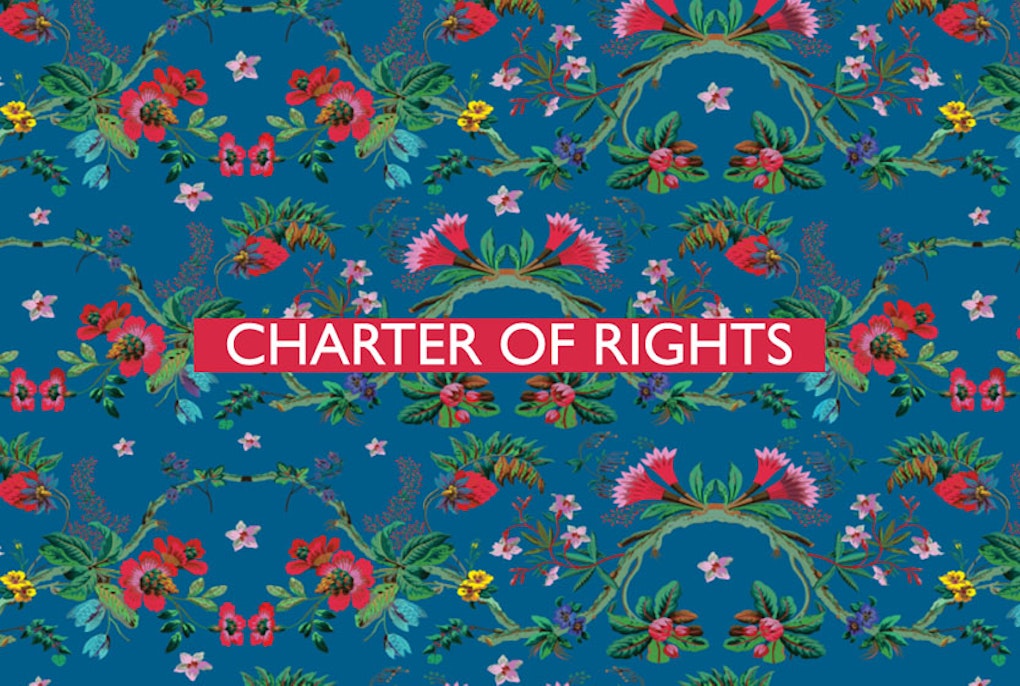
The Charter of Fundamental Rights: ‘All EU-r rights’ in 54 provisions
 Gabriel Toggenburg
Gabriel Toggenburg
Inequality among subnational units in Latin America is a scandal, paraphrasing what Guillermo O’Donnell wrote in 1996 on the social situation in this region more than two decades ago.
Casanare is the richest oil producing department in Colombia. Its gross geographic product (GGP) per capita is 9.3 times larger than Vaupés’s, the poorest, mostly indigenous, Colombian department located in the Amazon rainforest (1,610 versus 14,988 USD per capita). In Brazil, Piaui’s GDP per capita is 9.7 times lower than the Federal District of Brasília’s (2,092 versus 20,343 USD per capita). Formosa, one of the poorest Northern Argentine provinces, has a GDP per capita more than 10 times lower than that of the City of Buenos Aires (2,256 versus 23,439 USD).
Inequality within provinces and states is also enormous. Yet inequality in Tierra del Fuego is low for Latin American standards, with a provincial Gini index of 0.32 (data for 2011) being similar to that of Canada and Australia (2011 and 2012, respectively). On the other hand, Salta and Corrientes are the most unequal provinces in Argentina, with Gini indices of 0.45 and 0.46 respectively, similar to Guatemala, Malawi, and Paraguay (data for 2014, 2010, and 2013 respectively). Brazil shows similar inequality within states, ranging from less unequal states such as Santa Catarina which has a Gini of 0.435 to very unequal ones such as Brasilia which had a Gini of 0.578 (data for 2013). Several scholars have long claimed that there is a strong connection between federalism and inequality, either because this institutional framework tends to be adopted in very unequal territories or because, when implemented, federalism tends to produce more disparity than unity across regions.
For these scholars, federal transfers are one of the main causes of these distortions. They tend to incentivize provincial overspending and help generate large fiscal deficits -both at the provincial and national level. They also contribute to the consolidation and expansion of incumbents’ political machines, increasing clientelism and patronage in order to buy political loyalties as well as enable repression to control political dissent. Facing weak or even inexistent social accountability, transfers may also foster corruption and facilitate the personal enrichment of those in power in the provinces. If this is the case, federal transfers may end up generating more income for those in government and those politically and personally related to them. On top of that, by increasing patronage and clientelism, federal transfers may also reduce private employment and productivity.
Other scholars challenge these claims, arguing that federalism can improve aggregate and subnational economic outcomes instead of generating fiscal disequilibria, for instance through competition among states that can help preserve markets. Federalism can also contribute to a “gentler and kindler” democracy by encouraging political negotiations and consensus building among several actors. In political terms, federalism can actually represent a limit to excessive central power by creating veto points, instead of helping create subnational feuds.
From a “progressive” perspective, federal transfer systems may contribute to reducing interregional and interpersonal inequality. Several key social services, such as primary health and education, are policy responsibilities of subnational units in most decentralized federal systems, such as those of Argentina, Brazil, and Mexico and the same is true even in some decentralized unitary countries such as Colombia. Policy responsibilities of subnational units dramatically increased after the 1990s decentralization policies and the retrenchment of national governments and the social services they delivered, in the midst of adjustment reforms. These decentralized social services are crucial to improve socioeconomic indicators at the subnational level. Without transfers to subnational governments, more disadvantaged provinces depend on their own revenue to deliver vital social services. This severely diminishes their capacity to deal with the social problems they face, especially because their own revenue is lower than the national average and they usually have to deal with worse social indicators and in most cases, only have low-salaried and poorly trained professionals to deliver them. If more deprived subnational units receive more federal transfers and allocate a larger share of their budgets - comprising both federal transfers and their own revenue, to social spending instead of increasing clientelism and patronage, social indicators in these provinces would be more likely to improve. If that were the case, then we could expect a reduction in provincial interpersonal inequality. If less well-off provinces improve their social indicators, progressive federal transfer systems may also help reduce inequality between them and those that are richer.
Having summarized the discussion, can we empirically determine whether federalism encourages inequality? Or establish whether central government transfers help subnational governments provide vital social services thereby reducing it? In the end, are federal countries more capable of decreasing inequality than unitary cases?
More “progressive” federal transfers systems may help to reduce inequality both among and within provinces. More progressive federal transfers systems are those that collect revenue from richer regions of the country and redistribute it to poorer areas. More “regressive” federal transfer systems, on the contrary, are those which do not redistribute revenue from richer to poorer regions, basically because they guarantee that richer provinces can collect the lion’s share of revenue from their own territories. More regressive federal transfer systems generate higher concentrations of income in richer provinces and have less capacity to help poorer provinces to reduce inequality within their boundaries.
While being a Federal Scholar in Residence at the Institute of Comparative Federalism at Eurac Research in 2018, I worked on an empirical examination of this dividing debate. I calculated an index measuring the redistributive capacity of certain central governments, which is its fiscal ability to reduce regional disparities. This index measures the percentage change in a Gini coefficient before and after transfers or the difference in a Gini index of the initial per capita revenue of subnational units, which is the revenue they collect, and a Gini index of the final per capita revenue of subnational units, which is their total revenue, or the sum of their initial own revenue per capita and the central government’s per capita transfers. For the last figure available in a time series for five Latin American countries, Argentina redistributes more than Mexico, Chile, and Colombia. Brazil redistributes the least among the selected cases.
I then assessed the impact of the redistributive capacity of these central governments on interregional inequality, measuring according to the Gini Index of Interregional Inequality (GINIir). The GINIir measures the income gap per capita, of the average Gross Geographic Product (GGP) for each province, state, or department with respect to the national average. Argentina is more unequal interprovincially than Brazil, Colombia, Chile, and Mexico. According to usual standards, provincial GGP measures the value of the total final goods and services produced in a province or state in a given year. Very importantly, central government transfers to subnational units are not included in the calculus of GGP. Hence, I explored whether federal transfers are empirically associated with more or less equality among provinces in their GGP, or the average production of goods and services.
The data indicates that inequality between provinces fell more in Argentina than in the other selected countries (from 0.35 in 2000 to 0.319 in 2009). Argentina is the country that redistributes the most among the cases studied, which has lowered interregional inequality, but which still continues to be the most unequal interregionally. Without federal transfers, Argentina would surely be even more unequal.
In fact, results of correlation and regression analyses indicate that, in general, the redistributive capacity of central governments is statistically associated with reductions in interregional inequality - see here for the results. These results offer some support for the claims of a more “progressive” perspective, in which provinces may use federal transfers to encourage the performance of decentralized social services and improve social indicators, especially for the less well-off sectors of the population. This is reinforced when subnational units allocate a larger share of their budgets into social spending, particularly in poor regions, where the marginal impact of a dollar is greater because there are more needs. This view does not intend to negate the existence of clientelism and patronage in provincial politics. It only brings some empirical evidence to the connection between federal transfers and reductions in inequality and a plausible theoretical argument which links them.
One of the main differences between federal and unitary cases is that the former have mechanisms that appear, according to the results I found in my research, to be associated with reductions in inequality among and within districts. These instruments were, in many cases, created out of the political activation (and coordination) among the least developed provinces or states of the federation, which agreed to be part of it in exchange for politico-institutional (i.e., overrepresentation) and fiscal (i.e., federal transfers) devices that could favor them in the future. Some of these mechanisms, particularly progressive federal transfer systems, seem to fulfill, at least partially, this role. Provinces spending a larger share of their budget for social services also appears to be crucial in the reduction of inequality, helping to strengthen the redistributive effect of progressive federal transfers.
Lucas I. González - Federal Scholar in Residence 2018

This content is licensed under a Creative Commons Attribution 4.0 International license except for third-party materials or where otherwise noted.